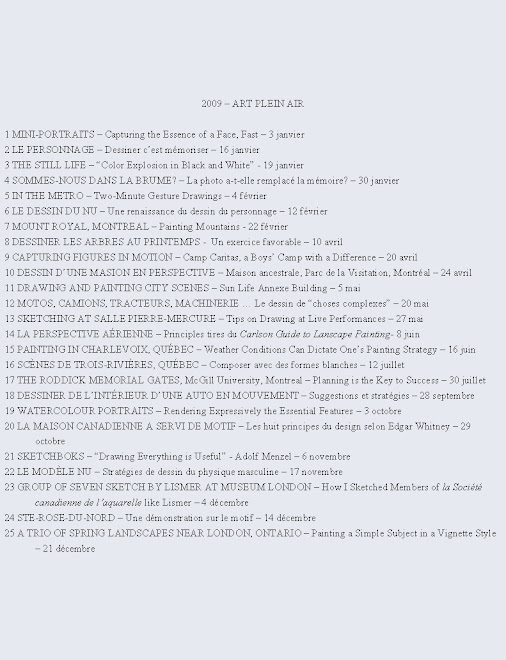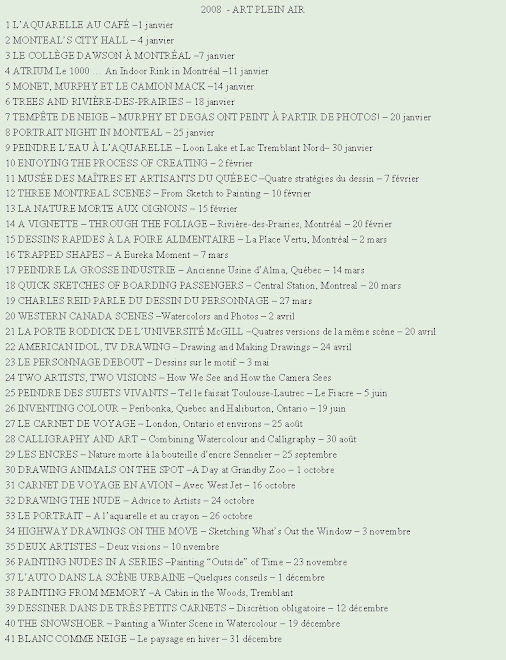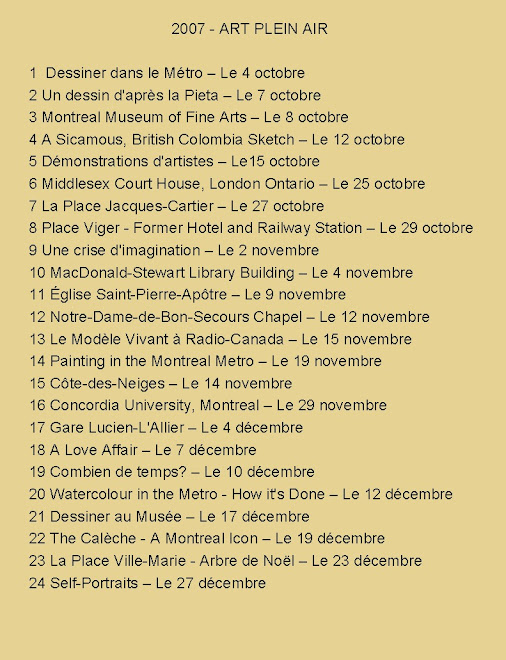 The challenge of sketching motion
The challenge of sketching motionImitating the famous “café artist” of the late 19th century, Toulouse-Lautrec, I enjoy drawing people at sports. “He spent the mornings there, tripping back and forth, sometimes in the middle of the tract, sometimes in the cyclists’ cubicles” ( Paul Leclerc in La revue blanche).

Drawing on site rather than from photos
If one looks closely at any of Lautrec’s sketches or even finished works, they all seem to vibrate, to be full of energy. They are not static. Lautrec worked constantly on site – at night-spots, the race track or elsewhere – rarely from photographs. I am an idol and disciple of Toulouse.

Keeping it simple
Last summer I had the opportunity to sketch at a boys’ sports camp. Because I moved around as I sought various viewpoints from which to draw I simplified my equipment and supplies. I carried pencils, pens and paper handy in a belt purse and in a small back pack.

Planning
The morning activities took place on sports fields. After a mid-day swim and lunch the boys went to a location where they would kayak, bike or rock climb for example. Therefore I had to be at the proposed destination early in order to record them upon arrival.
The morning activities took place on sports fields. After a mid-day swim and lunch the boys went to a location where they would kayak, bike or rock climb for example. Therefore I had to be at the proposed destination early in order to record them upon arrival.

Drawing strategy
Generally I started with a line drawing using a thin point permanent marker (Micron 03). Then, I rendered the value with either graphite or Nero soft pencils. For watercolors, I used half pans and a travel brush. This procedure worked well because, if necessary, I could easily complete the sketch from memory later. Drawing quickly with a permanent marker was the key. Erasing slows one down and “adjusted strokes” add to feel of spontaneity and action. Drawing in a small sketch book – 5in by 7in – gets the essentials down faster.

Design strategy
Upon arrival I planned the composition in my mind. Then I initiated the sketch near the center of the page and let it evolve to the edges. I concentrated on a key player, drawing the head shape first. It was important to feel and record the flow of the upper body keeping in mind head to body proportions. Details, such as hands and feet, could be added later if necessary.
 Relating the figures to the environment
Relating the figures to the environmentFor the most part a few sketchy shapes around the figures suggested the playing field completed later if necessary. However, I found that it was important to situate the figures in an environment, however summarily. Sometimes, a few calligraphic strokes at the feet suggesting grass sufficed.

Importance of drawing trapped shapes
The moment I spotted a trapped shape either within a figure (for example, the space between the legs) or elsewhere, I drew it. Varying these shapes throughout helped create a vignette type composition which evolved intuitively.

Challenge yourself to draw from life
If you have never tried drawing figures in motion, try it. With practice you will surely get the hang of it. It is far more enjoyable than drawing figures from static photos, believe me!

CAMP CARITAS – Lac Labelle, Québec Laurentians
If you are interested in knowing more about this unique sports camp which, along with a two-week sports filled holiday, teaches boys between 11 and 17 strong positive social values click on the link, or call: 514-272-1056.










Aucun commentaire:
Enregistrer un commentaire